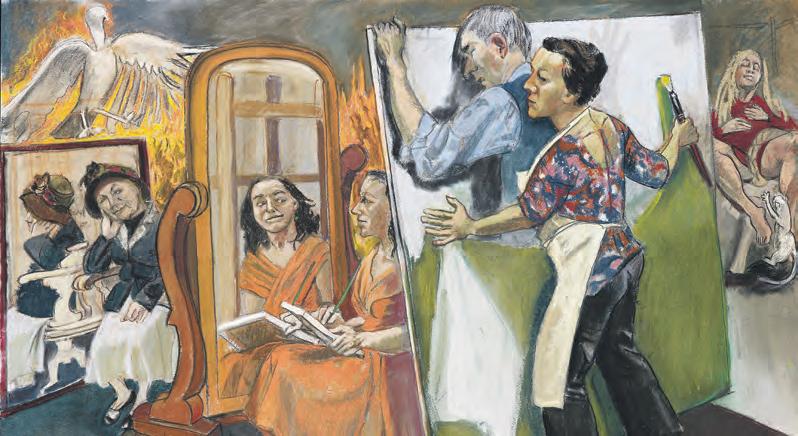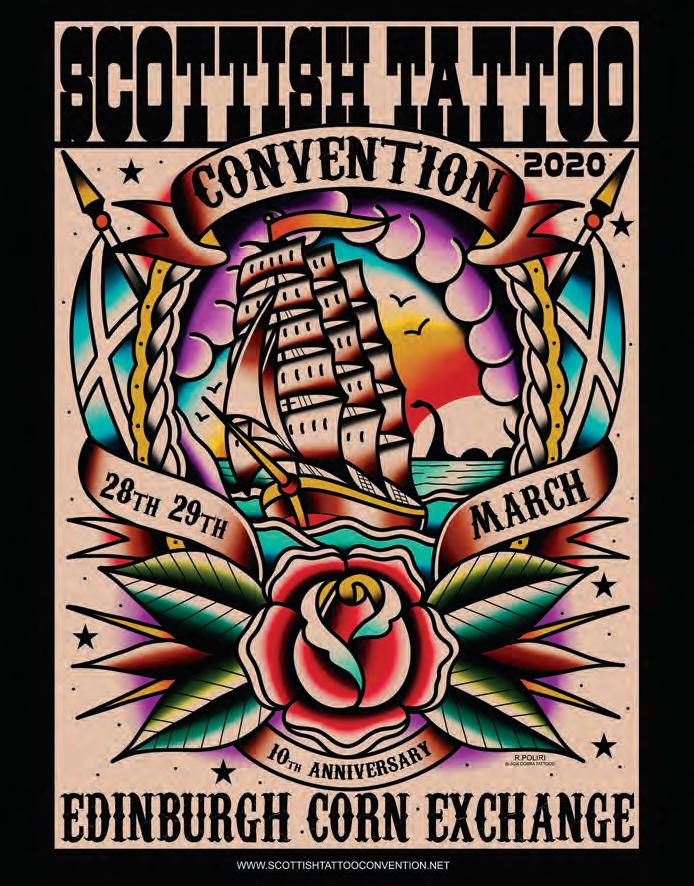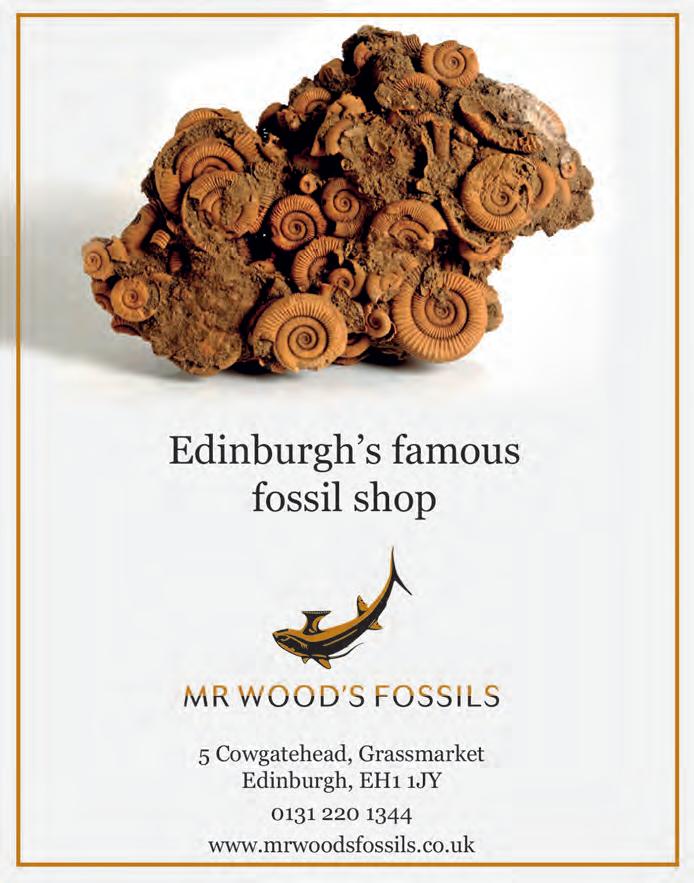
3 minute read
Art
Paula Rego Scottish National Gallery Of Modern Art (Modern Two), Edinburgh
Narrative intrigue and political urgency form a dual momentum for the six room survey of Paula Rego’s paintings in Modern Two.
Advertisement
surrounded by abstract cartoonish characters, poised to attack.
Over the following decades and the next room, Rego’s work becomes weightily figurative, laden with knobbly flesh, broad-limbed women, and at times a claustrophobic sense of psychological tension. See Rego’s Abortion paintings (1998-9), complex windows into the unofficial medical set-ups necessitated by conservative law. They were made to furnish the debate surrounding the 1998 referendum on abortion in Portugal. Rego’s figures are often in uncomfortable poses or curled in pain, staring with an implacable vulnerability. She renders their forms robustly, in dense accumulations of pastel or brush marks.
Other works engage more literary references, like Snow White in which a Paula Rego, Painting Him Out, 2011, Pastel on paper mounted on aluminium, 119.4 x 179.7 cm In Room One, Rego’s Popinspired abstract collages riotously obscure references to the oppressive political circumstances in Portugal at the time. Disorganised, violent and menacing, Centaur 1964 has as its centre an inverse of the titular mythical creature: a bloodied-looking human body and bull’s head Credit: Paula Rego, Courtesy of Marlborough, New York and London
France-Lise McGurn Tramway, Glasgow
The opening night of In Emotia had people sardined and queued up, cramming into every available cranny, mirroring the figures painted across the space.
Luckily I found a quieter time to visit France-Lise McGurn’s installation of painted canvases, walls and newly incorporated neon stripping. The feet are so elegantly elongated and playfully characterful that they make a convincing case for foot fetishism.
There is something unfailingly satisfying in witnessing something executed with clear talent and skill. You can’t help but imagine the artist running around the space freely, perhaps a martini in hand, as charismatic as the figures she draws.
An effeminate celebration, the pastel pinks and nude confident bodies are atmospherically lit by the neons creating a perfectly Instagrammable hue. Inspired by living in and clubbing in Glasgow, McGurn manages to capture a disparate togetherness that succeeds in giving a contemporary feeling to figurative painting.
Despite McGurn’s work often being described as an exploration of intimacy and sexuality, the work feels conservative. The surrounding bodies are all slender and tall, with the physique and movement you might expect from the neighbouring dancers at Scottish Ballet. Crotches are given a doll-like smoothness other than the occasional slightest suggestion from a singular brush mark. There is a tangible sensuality in the work but it expresses a disappointingly vanilla sexuality.
Club culture emerged out of a predominately POC and Queer need for communal safe spaces. Despite the strong influence of clubbing, McGurn does not appear to touch upon this context and perhaps it is this missing acknowledgment that makes this very enjoyable exhibition feel limited in its success. [Katie Dibb]
Until 29 Mar sly-faced woman inspects the underwear of her infant daughter dressed in a Disney Snow White costume. The girl’s craggy and wisened face is an acutely disturbing visual of a childhood ruined by parental abuse – a theme that continues in the Female Genital Mutilation (2009) sequence. Rego is clear that she isn’t interested in showing ‘blood, gore or anything to sicken’. Nevetheless, at their most effective the images are cut across by, and look out into the gallery with the figures’ hate-filled glances like in The Maids (1987), the Abortion series’ defiant gazes or the miserably resolute staring of her Dog Women series. Through careful observation and classically informed technique, each of Rego’s works is a singular and synecdochal encounter with well-known myths, stories or political situations. [Adam Benmakhlouf]
Until Sun 19 Apr











